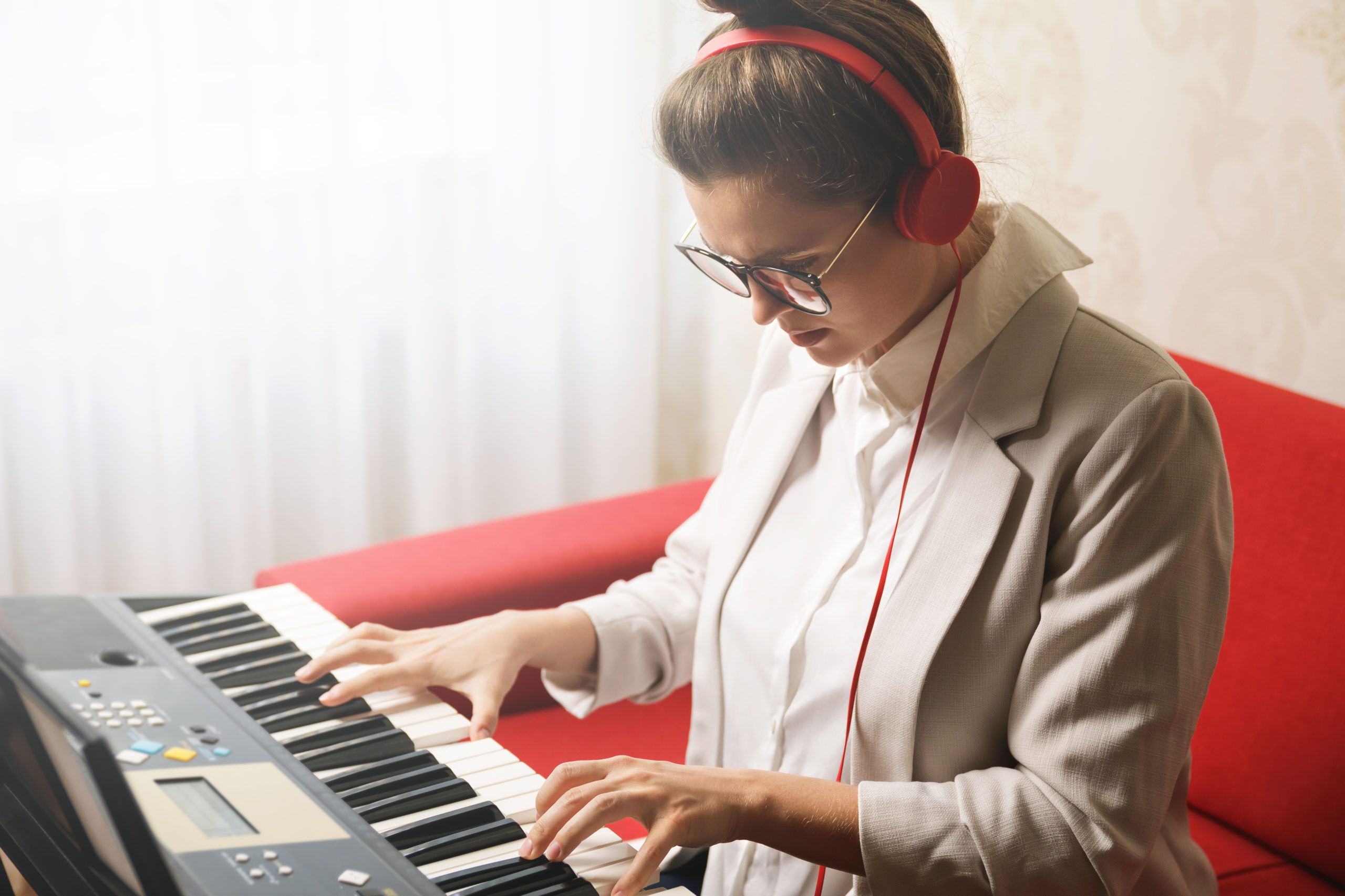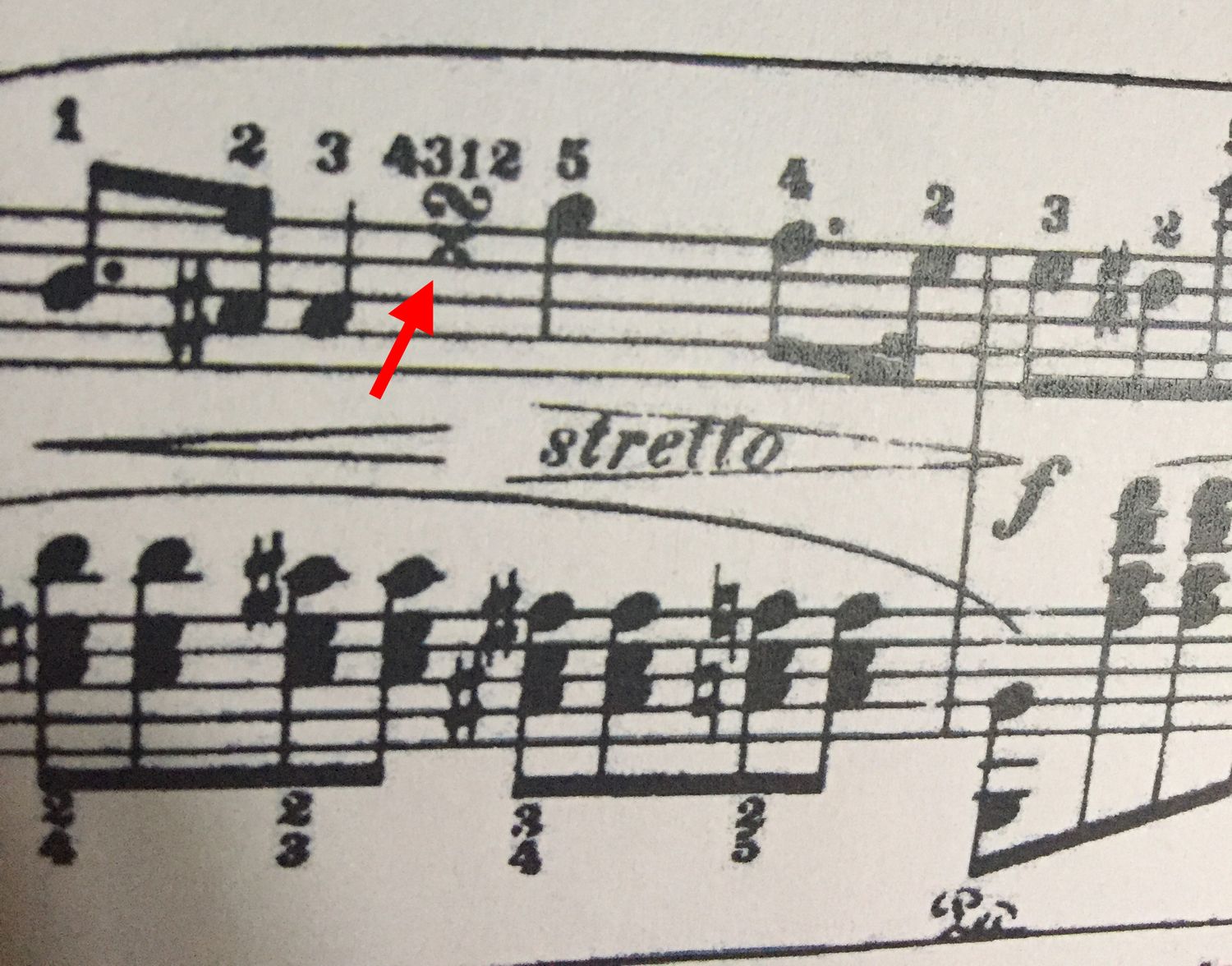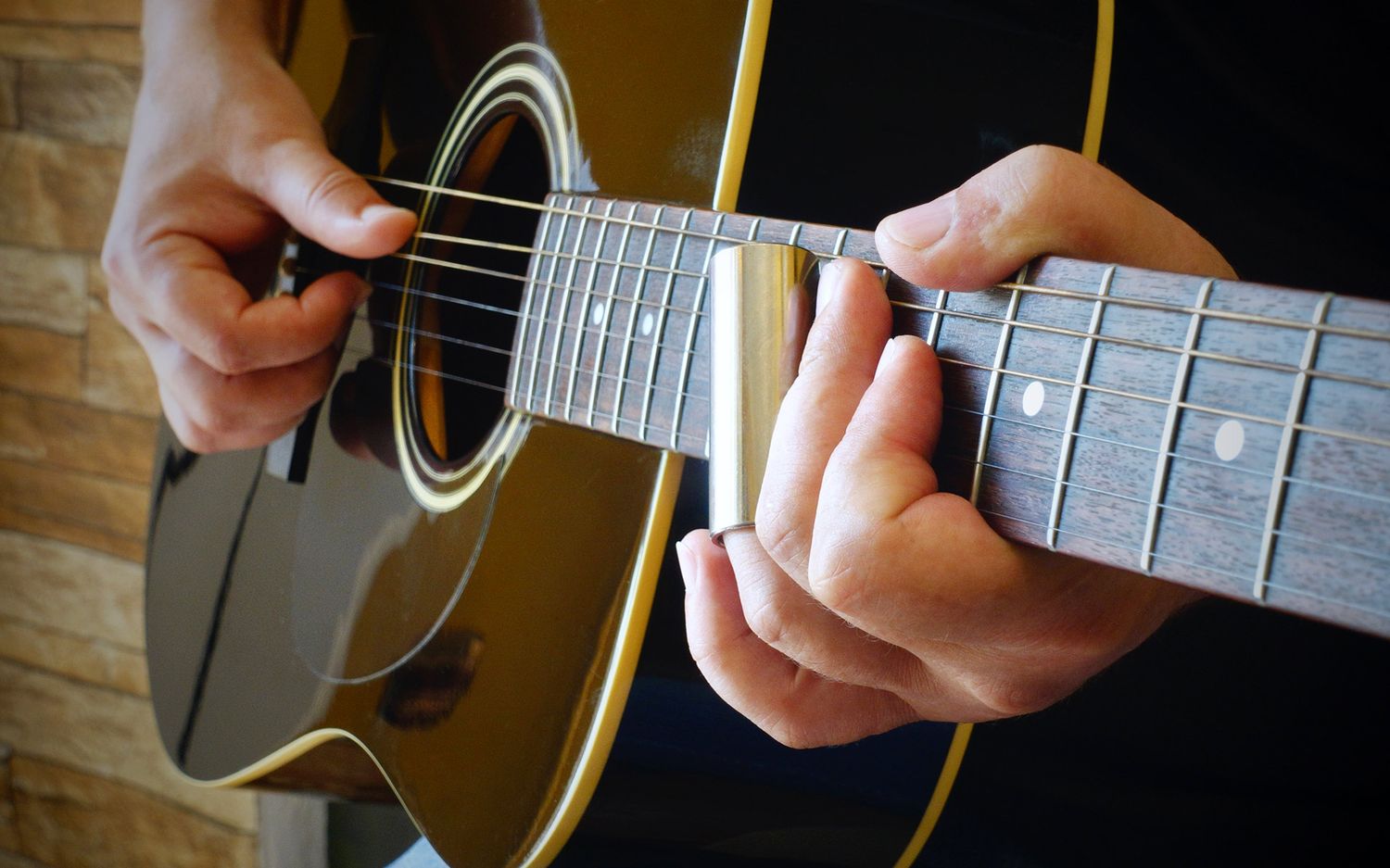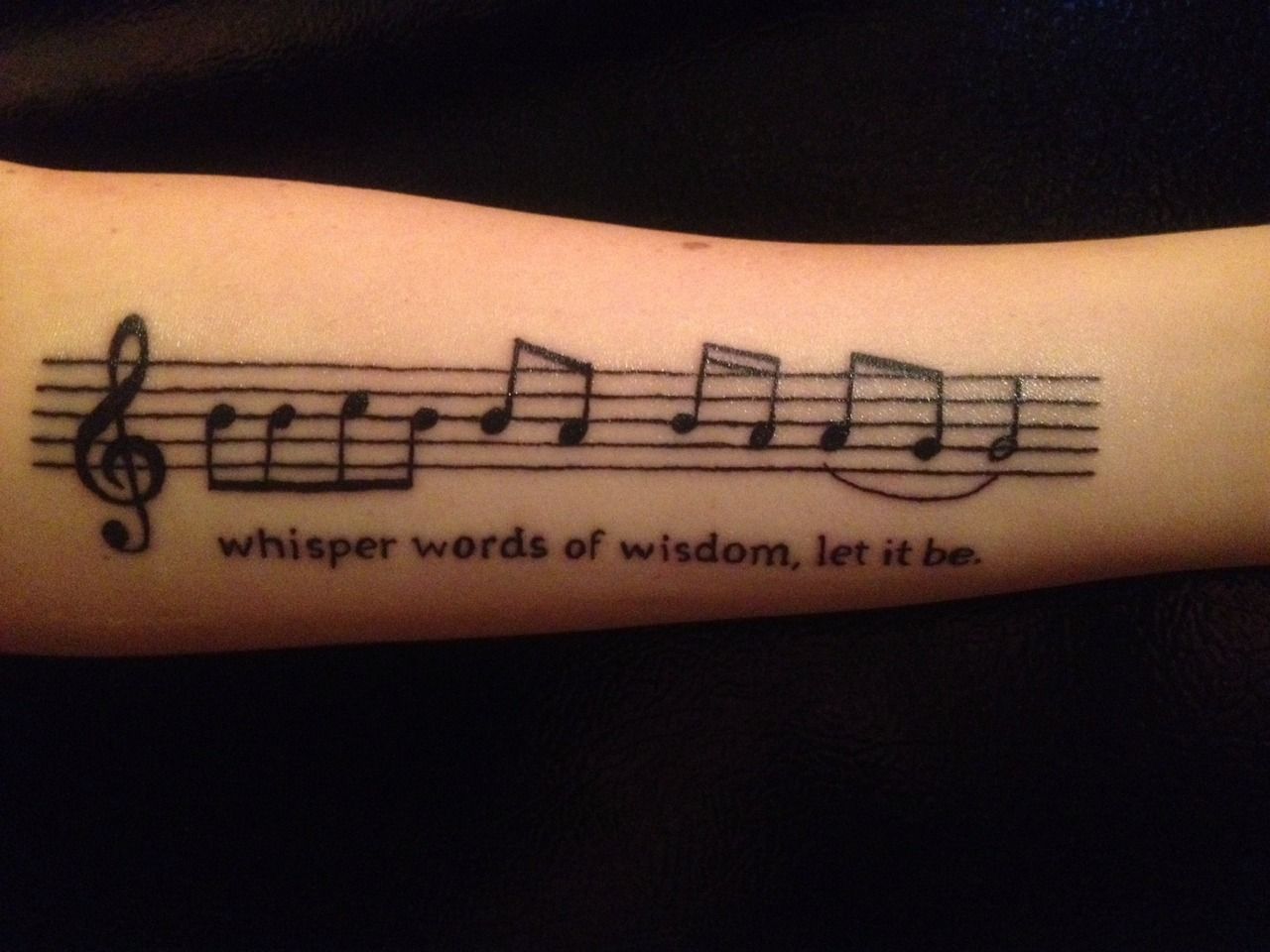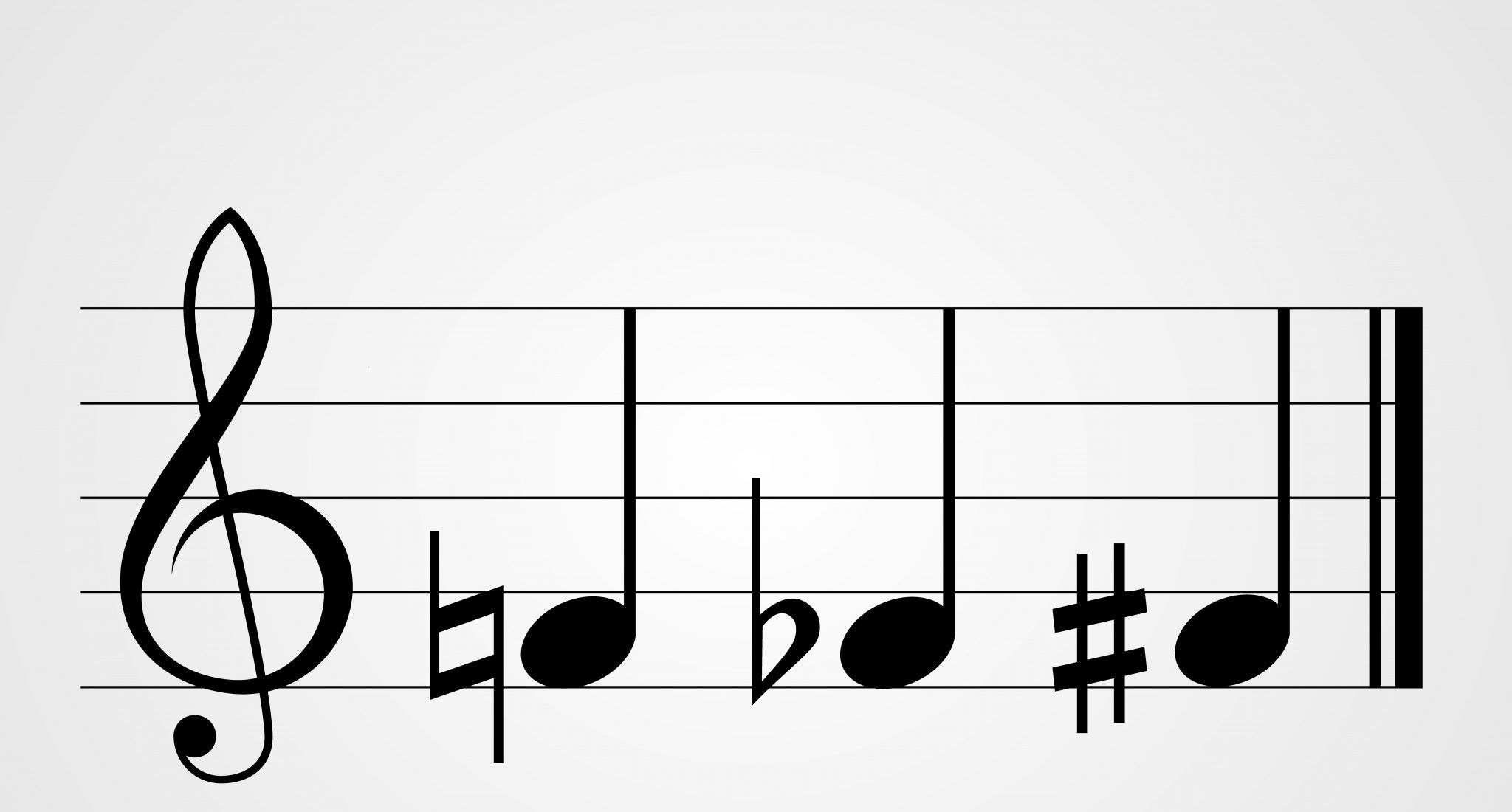Home>Events & Info>Music History>What Does Opera Mean? (Music History)
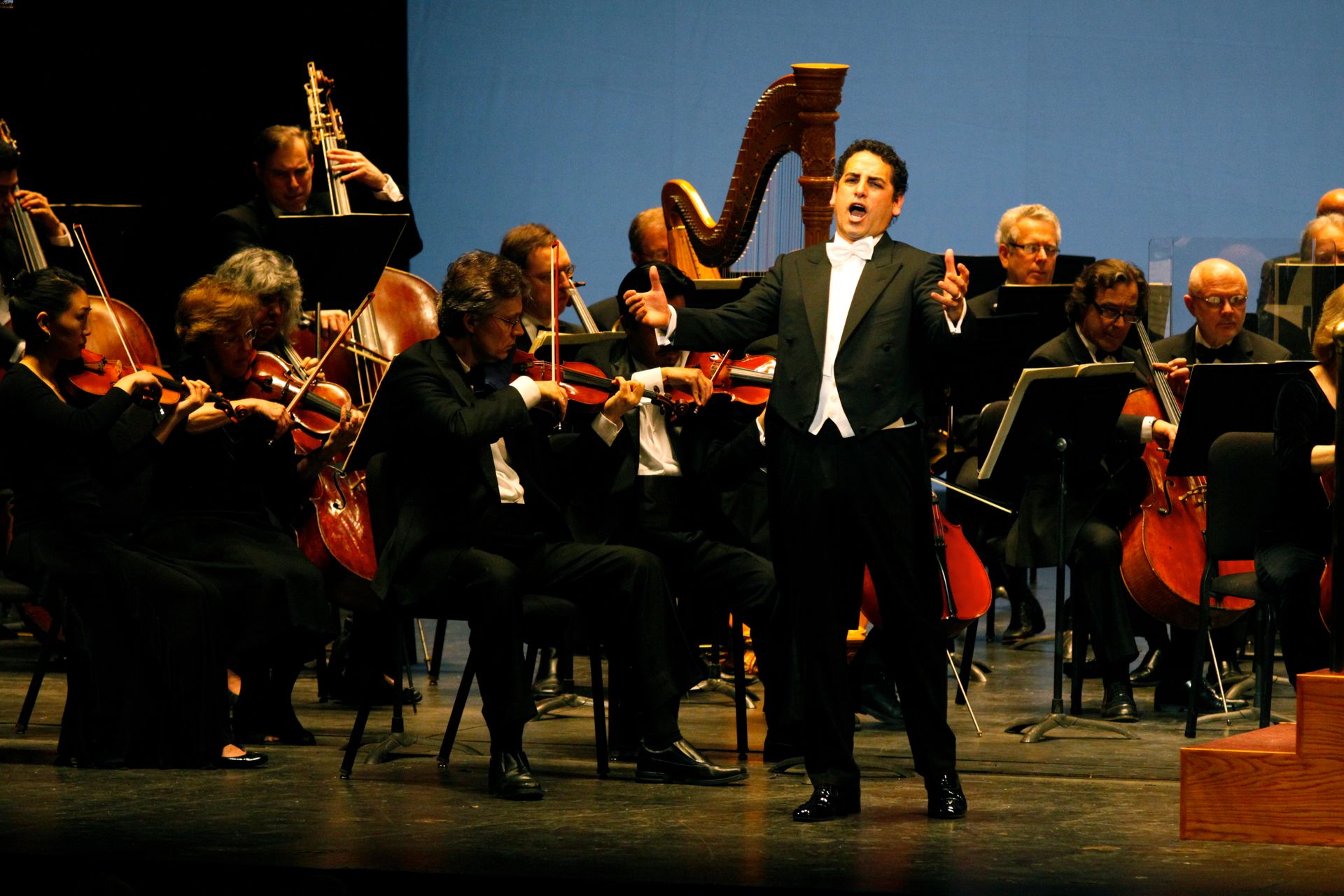

Music History
What Does Opera Mean? (Music History)
Modified: January 22, 2024
Discover the meaning of opera in music history and explore its rich cultural significance. Uncover the origins, evolution, and impact of this art form.
(Many of the links in this article redirect to a specific reviewed product. Your purchase of these products through affiliate links helps to generate commission for AudioLover.com, at no extra cost. Learn more)
Table of Contents
Introduction
Opera, a form of musical theater that combines singing and acting with intricate musical compositions, has a rich and fascinating history. From its origins in Renaissance Italy to its influence on the development of classical music, opera has captivated audiences for centuries.
The term “opera” comes from the Latin word for “work” or “labour,” indicating the collective effort required to produce such a complex art form. With its origins dating back to the late 16th century, opera quickly became a major cultural phenomenon, spreading across Europe and eventually making its way to other continents.
Opera is a unique genre that brings together various elements of drama, music, and visual spectacle to tell captivating stories. It combines powerful vocal performances, intricate orchestral music, and elaborate sets and costumes to create a complete sensory experience for the audience.
Opera is not only a vehicle for storytelling but also an art form that has pushed the boundaries of creative expression. It has inspired composers to create some of the most memorable and influential works in classical music history.
Throughout the centuries, opera has undergone significant transformations, adapting to the evolving tastes and preferences of audiences. From the grand opera productions of the 19th century to the modernist experiments of the 20th century, opera has proved to be a versatile and dynamic art form.
In this article, we will delve into the origins and development of opera, explore its defining characteristics, examine different types and styles of opera, highlight notable composers and their contributions, discuss famous opera houses and performances, and investigate the impact and influence of opera in music history. We will also take a look at the current state of opera and its future prospects in the ever-changing landscape of the performing arts.
Join us on this musical journey as we explore the enchanting world of opera and unlock its secrets, discovering why it continues to mesmerize audiences and leave a lasting impact on the cultural landscape.
Origin of Opera
The roots of opera can be traced back to the early years of the Florentine Renaissance in Italy. The exact origins of opera are complex and multifaceted, emerging from various cultural and artistic movements of the time.
One influential factor in the development of opera was the humanist movement in Italy, which emphasized the importance of reviving Greek drama and combining it with music. Renaissance scholars and intellectuals sought to recreate the ancient Greek concept of “total theater,” where music, poetry, dance, and theater were integrated.
In Florence, a group of intellectuals known as the Florentine Camerata worked towards this goal in the late 16th century. Led by Count Giovanni de’ Bardi, the Camerata aimed to recapture the emotional power of ancient Greek dramas by combining it with the power of music.
Through their experiments and discussions, the Camerata laid the foundation for what would become opera. They believed that by using music, they could not only enhance the emotional impact of the text but also convey the dramatic action more effectively.
One of the most significant figures in the early development of opera was Jacopo Peri. In 1598, Peri composed “Dafne,” often considered the first true opera. Collaborating with poet Ottavio Rinuccini, Peri’s composition combined recitative (a style of singing that imitates natural speech) with melodic sections, forming a cohesive dramatic work.
Opera quickly gained popularity in Italy, particularly in the courts of the aristocracy and the nobility. It served as a means of entertainment and cultural expression for the ruling elite, often performed during lavish celebrations and special occasions.
With time, opera spread beyond Florence and became popular in other Italian cities. In the 17th century, opera houses started emerging in cities such as Venice, Naples, and Rome, further solidifying opera’s place in Italian culture.
While opera initially embraced historical and mythological themes, it also began to explore contemporary stories. One of the most famous examples is Claudio Monteverdi’s “L’Orfeo,” first performed in 1607. It tells the ancient Greek myth of Orpheus, but with a focus on human emotions and dramatic conflict.
The origin of opera marked a significant shift in the way music was perceived and presented. It introduced a new form of artistic expression that combined the power of music and drama, paving the way for the development of opera as we know it today.
Development and Evolution of Opera
After its inception in Italy, opera rapidly gained popularity and began to evolve and adapt to the changing musical tastes and cultural landscapes across Europe.
In the early 17th century, opera spread beyond Italy to other countries such as France, Germany, and England. Each region embraced opera in its own unique way, incorporating local styles, languages, and traditions.
In France, opera took on a distinctive character under the patronage of King Louis XIV. French opera, known as “tragédie lyrique,” emphasized the integration of dance, music, and drama. Composers like Jean-Baptiste Lully and Jean-Philippe Rameau played significant roles in shaping the French operatic tradition.
In Germany, opera developed in parallel with the rise of the Baroque period. Opera seria, a formal and highly stylized form, became popular. Composers like George Frideric Handel and Johann Sebastian Bach made significant contributions to the genre.
Meanwhile, in England, opera underwent its own unique development. English opera, often referred to as “semi-opera,” combined spoken dialogue with musical interludes. Henry Purcell, known for his composition “Dido and Aeneas,” became a prominent figure in the English opera scene.
During the 18th century, opera continued to evolve, adapting to the changing musical tastes of the time. The rise of the classical era led to the development of opera buffa, or comic opera, which incorporated lighter subject matter and more accessible music. Composers like Wolfgang Amadeus Mozart, with his famous opera “The Marriage of Figaro,” and Christoph Willibald Gluck played key roles in shaping this genre.
As the 19th century approached, opera began to take on a grander scale. The Romantic era ushered in an era of lavish productions and emotive music. Composers like Giuseppe Verdi and Richard Wagner created epic and emotionally charged operas that continue to be performed and celebrated today.
In the 20th century, opera took a more experimental turn. Composers like Dmitri Shostakovich and Igor Stravinsky pushed the boundaries of traditional opera, embracing new forms and musical techniques. Operas became more intellectually challenging, often exploring complex psychological themes.
With the advent of technology, opera also found its place in the world of cinema and recorded music. Live performances were captured and broadcasted, allowing opera to reach a wider audience. Opera houses around the world began embracing new staging techniques, incorporating multimedia elements to enhance the visual experience.
Today, opera continues to evolve and adapt to contemporary sensibilities. Modern operas explore a wide range of topics, often incorporating diverse musical influences and experimental approaches. Opera festivals, competitions, and collaborations between opera companies and other art forms keep the tradition alive and relevant.
The development and evolution of opera over the centuries reflect the ever-changing nature of artistic expression. From its humble beginnings in Renaissance Italy to its global impact, opera remains an integral part of music history, captivating audiences with its compelling narratives and breathtaking music.
Characteristics of Opera
Opera is a unique art form that combines music, drama, and visual spectacle to create a complete sensory experience. It possesses several defining characteristics that set it apart from other forms of musical and theatrical performance.
1. Singing as the Dominant Form of Expression: In opera, singing takes center stage. The performers, known as opera singers or vocalists, use their voices to convey the emotions, thoughts, and actions of the characters. This is achieved through various vocal techniques, such as recitative (speech-like singing) and aria (melodic solo passages).
2. Dramatic Storytelling: Opera tells stories through both music and dramatic action. The libretto, or the text of the opera, is often based on mythological, historical, or literary themes. The combination of singing, acting, and stage direction brings these stories to life, immersing the audience in the narrative.
3. Music as the Driving Force: Opera relies heavily on music to enhance the emotional impact of the story. Composers create intricate and expressive musical compositions that accompany the singers and convey the mood, character development, and dramatic tension of the opera. The orchestration, instrumentation, and use of different musical forms add depth and complexity to the performance.
4. Elaborate Staging and Visual Spectacle: Opera is known for its grand and visually captivating productions. Elaborate sets, costumes, lighting, and stage effects are used to create immersive and visually stunning worlds that enhance the storytelling and engage the audience’s imagination.
5. Collaboration of Various Artistic Disciplines: Opera brings together multiple artistic disciplines, including singing, acting, dancing, orchestration, and visual arts. This collaborative effort results in a multi-dimensional experience that combines the best of various art forms.
6. Emotional Intensity and Heightened Expression: Opera aims to evoke strong emotions and create a heightened sense of expression. The combination of the human voice, music, and dramatic performance allows for intense emotional portrayals and profound connections between the characters and the audience.
7. Integration of Chorus and Ensembles: Opera often includes ensemble pieces and choruses, where multiple voices join together. These sections add depth, richness, and complexity to the musical composition, creating powerful moments of collective expression.
8. Language and Translation: Opera can be performed in various languages, depending on the origin and context of the opera. Translations and supertitles are often provided to help the audience follow the plot and understand the lyrics, especially in performances where the language of the opera differs from the native language of the audience.
These characteristics combine to create a unique and captivating art form that transports the audience into the world of the opera, evoking powerful emotions and leaving a lasting impact.
Types and Styles of Opera
Opera encompasses a rich variety of types and styles, each with its own distinct characteristics and conventions. From the grandeur of the 18th-century opera seria to the accessibility of contemporary opera, the genre has evolved to embrace a wide range of artistic expressions.
1. Opera seria: Opera seria, which means “serious opera” in Italian, was popular during the Baroque period in the 17th and 18th centuries. It featured formal and stylized music, often exploring mythological or historical subjects. Composers like George Frideric Handel and Wolfgang Amadeus Mozart excelled in this genre.
2. Opera buffa: Opera buffa, or comic opera, emerged in the late 18th century as a lighter alternative to opera seria. It incorporated humorous and relatable storylines, everyday characters, and accessible music. Gioachino Rossini’s “The Barber of Seville” is a well-known example of opera buffa.
3. Opera comique: Opera comique, originating in France, integrated spoken dialogue with musical numbers. It combined elements of opera buffa and traditional French vaudeville theater. Jacques Offenbach’s works, such as “The Tales of Hoffmann,” exemplify the style of opera comique.
4. Romantic opera: The Romantic era brought about a shift in opera, emphasizing emotional intensity and lush orchestration. Composers like Giuseppe Verdi and Richard Wagner created epic and emotionally charged works. Verdi’s “La Traviata” and Wagner’s “Tristan und Isolde” are iconic examples of Romantic opera.
5. Bel canto: Bel canto, meaning “beautiful singing” in Italian, refers to a vocal style characterized by smooth, lyrical melodies and virtuosic vocal ornamentation. It emerged during the early 19th century, with composers like Vincenzo Bellini and Gaetano Donizetti who showcased the technical skill and artistry of the singers.
6. Modern and contemporary opera: In the 20th and 21st centuries, opera experienced a diversification of styles and subjects. Composers like Benjamin Britten, Igor Stravinsky, and Philip Glass embraced avant-garde and experimental approaches in their works. Contemporary opera often explores relevant and thought-provoking themes, incorporating a wide range of musical influences.
7. National and regional opera styles: Different regions and countries have developed their own unique styles of opera. For example, German opera, with composers like Richard Strauss and Carl Maria von Weber, often features complex storytelling and rich orchestration. Russian opera, represented by composers like Pyotr Ilyich Tchaikovsky and Modest Mussorgsky, offers powerful and emotionally charged works.
8. Chamber opera: Chamber opera is a scaled-down, intimate form of opera designed for smaller venues. It often focuses on character-driven storytelling and experimental approaches to staging. Chamber operas allow for close connections between performers and the audience, offering an alternative to the grand productions of larger opera houses.
These are just a few examples of the many types and styles of opera that exist. The diversity within the genre ensures that there is something for everyone, from the grand and traditional to the innovative and avant-garde.
Opera Composers and their Contributions
Throughout the centuries, numerous composers have contributed to the development and evolution of opera, shaping the genre and leaving a lasting impact on music history. Their unique talents and contributions have influenced the way opera is composed, performed, and appreciated.
1. Claudio Monteverdi (1567-1643): Monteverdi is often regarded as the founder of opera. His works, such as “L’Orfeo” and “The Coronation of Poppea,” were groundbreaking in their use of expressive singing and innovative compositional techniques.
2. Wolfgang Amadeus Mozart (1756-1791): Mozart’s operas are beloved for their melodic beauty, intricate storytelling, and emotional depth. His timeless masterpieces, including “The Marriage of Figaro,” “Don Giovanni,” and “The Magic Flute,” continue to be performed and celebrated worldwide.
3. Giuseppe Verdi (1813-1901): Verdi is one of the most renowned opera composers. His works, such as “La Traviata,” “Rigoletto,” and “Aida,” feature powerful and deeply emotional music that resonates with audiences to this day. Verdi’s operas are filled with memorable melodies and highlight the human drama at the core of storytelling.
4. Richard Wagner (1813-1883): Wagner revolutionized opera with his concept of the Gesamtkunstwerk, or “total work of art,” where music, drama, and visual elements are seamlessly integrated. His operas, such as “Tristan und Isolde” and “The Ring Cycle,” are known for their monumental scale, lush orchestration, and exploration of myth and legend.
5. Giacomo Puccini (1858-1924): Puccini’s operas epitomize the Romantic and verismo styles. His works, including “La Bohème,” “Tosca,” and “Madama Butterfly,” feature soaring melodies, vivid characterizations, and passionate storytelling. Puccini’s music captures the intensity of human emotion and has become synonymous with the operatic repertoire.
6. Richard Strauss (1864-1949): Strauss combined romanticism and modernism in his operas, crafting richly orchestrated works that pushed the boundaries of tonality and expression. His operas, such as “Salome” and “Der Rosenkavalier,” are known for their grandeur, intricate vocal writing, and psychological depth.
7. Benjamin Britten (1913-1976): Britten was a leading figure of British opera in the 20th century. His operas, such as “Peter Grimes” and “Billy Budd,” showcased his gift for marrying music and drama. Britten’s works explore themes of alienation, individuality, and society’s impact on the individual.
8. Philip Glass (1937-): Glass is a prominent figure in contemporary opera. His minimalist compositions, such as “Einstein on the Beach” and “Satyagraha,” focus on repetitive musical patterns and explore philosophical and spiritual themes. Glass’s innovative approach has brought new dimensions to the opera genre.
These are just a few examples of the many influential composers who have shaped and contributed to the world of opera. Each composer brought their unique style, vision, and artistic sensibilities, leaving a lasting legacy within the genre and shaping the future of opera as a vibrant and evolving art form.
Famous Opera Houses and Performances
Opera houses have served as prestigious venues for opera performances, hosting some of the most memorable and influential productions throughout history. These iconic cultural hubs have become synonymous with the world of opera, attracting audiences from around the globe.
1. Teatro alla Scala (Milan, Italy): Known as one of the most renowned opera houses in the world, Teatro alla Scala has a rich history dating back to its opening in 1778. It has witnessed countless premieres of operas by renowned composers. Performances at La Scala are celebrated for their grandeur and excellence, attracting esteemed artists and opera enthusiasts worldwide.
2. Royal Opera House (London, England): The Royal Opera House, located in Covent Garden, is home to both the Royal Opera and the Royal Ballet. Known for its majestic architecture and rich cultural heritage, the venue has hosted world-class opera productions, including the works of Verdi, Mozart, and Tchaikovsky. The Royal Opera House remains a symbol of British excellence in the performing arts.
3. Opéra Garnier (Paris, France): Opéra Garnier, also known as Palais Garnier, is an architectural masterpiece that has captivated audiences with its opulent surroundings since its opening in 1875. It has witnessed the premieres of iconic operas like Bizet’s “Carmen” and Saint-Saëns’ “Samson and Delilah.” Opéra Garnier showcases the grandeur and artistic splendor of French opera.
4. Metropolitan Opera House (New York City, United States): The Metropolitan Opera House, affectionately known as the “Met,” is a cultural landmark renowned for its diverse programming and world-class performances. It has showcased operas from various periods and styles, featuring acclaimed singers and productions. The Met brings opera to a wide audience through its live broadcasts and digital initiatives.
5. Vienna State Opera (Vienna, Austria): The Vienna State Opera, located in the heart of Vienna, is esteemed for its dazzling performances and long-standing tradition of excellence. It has a rich history dating back to the mid-19th century and continues to present a wide repertoire of operas, including those by Mozart, Strauss, and Wagner. The Vienna State Opera is a symbol of Austrian cultural heritage.
6. Teatro Colón (Buenos Aires, Argentina): Teatro Colón is a world-class opera house known for its exceptional acoustics and architectural beauty. Since its opening in 1908, it has hosted countless opera productions, showcasing local and international talent. Teatro Colón has earned a reputation as one of the finest opera houses in Latin America.
7. Salzburg Festival (Salzburg, Austria): The Salzburg Festival is an annual celebration of music and performing arts held in the birthplace of Mozart. It features a wide range of opera performances in various prestigious venues across the city, including the grand Salzburg Festival Hall. The festival attracts top-tier artists and opera enthusiasts from around the world.
These famous opera houses and performances represent the epitome of artistic achievement and cultural significance within the world of opera. They continue to inspire and captivate audiences, showcasing the beauty and power of this remarkable art form.
Impact and Influence of Opera in Music History
Opera has had a profound impact on the development of music history, influencing composers, shaping genres, and leaving an indelible mark on cultural expression. It has served as a catalyst for musical innovation and artistic exploration, making significant contributions to the evolution of the music world.
1. Advancement of Music Composition: Opera pushed the boundaries of musical composition, demanding complex orchestration, inventive harmonies, and expressive vocal writing. Composers like Mozart, Verdi, and Wagner expanded the possibilities of musical language, creating powerful and emotionally charged compositions that continue to be celebrated today.
2. Fusion of Music and Drama: Opera seamlessly blends music and drama, showcasing the synergy between the two art forms. The incorporation of vocal performances, orchestration, and dramatic storytelling allowed composers to convey emotions and narratives in a uniquely powerful way, influencing subsequent theatrical forms and musical genres.
3. Popularization of Vocal Arts: Opera elevated the status of vocal arts, giving prominence to virtuoso singers and celebrating their technical prowess. The demands of opera required singers to possess exceptional vocal abilities, leading to the emergence of renowned vocal performers and shaping the development of the opera profession.
4. Evolution of Musical Forms and Genres: Opera has inspired and influenced the development of various musical forms and genres. From symphonic works to art songs, the influence of opera can be seen in the use of narrative structures, expressive melodies, and dramatic storytelling techniques.
5. Cultural Reflection and Expression: Opera has served as a mirror of cultural and social contexts, reflecting the values, beliefs, and concerns of its time. It has addressed political, social, and philosophical themes, sparking intellectual debates and challenging societal norms. Operas like Bizet’s “Carmen” and Puccini’s “Madama Butterfly” shed light on social issues and cultural clashes.
6. International Exchange and Cross-Cultural Collaboration: Opera has facilitated international exchange and cross-cultural collaboration, bringing together composers, performers, and audiences from different countries and backgrounds. It has sparked cultural dialogue and appreciation, fostering understanding and appreciation of diverse artistic traditions.
7. Theatrical Innovations and Technological Advances: Opera has been a driving force behind theatrical innovations and technological advancements. From elaborate stage designs and lighting effects to the use of supertitles and live broadcasts, opera has embraced new technologies to enhance the visual and auditory experiences for audiences.
Opera’s impact and influence on music history continue to resonate to this day. Its legacy can be heard in contemporary music, theatrical productions, and the way we approach storytelling through music. Opera remains a powerful and transformative art form that continues to captivate and inspire audiences worldwide.
Current State and Future of Opera
Opera, while rooted in centuries of tradition, continues to evolve and adapt to the ever-changing landscapes of art and entertainment. The current state of opera reflects a diverse and vibrant art form that strives to connect with contemporary audiences while honoring its rich heritage.
1. Expansion of Repertoire: Opera companies are increasingly embracing a wider range of repertoire, including works from different time periods, new commissions, and lesser-known operas. This allows for a more diverse and inclusive selection of stories and musical styles, catering to a broader audience base.
2. Relevance to Modern Audiences: Opera companies are striving to make opera more accessible and appealing to modern audiences. This includes innovative staging, multimedia collaborations, and creative reinterpretations of classic operas to make them more relatable to contemporary society.
3. Embracing Technology: Technology plays a crucial role in bringing opera to a wider audience. Live high-definition broadcasts in cinemas, online streaming platforms, and virtual reality experiences provide opportunities for people to experience opera regardless of their geographical location.
4. Collaborations with Other Art Forms: Opera is increasingly incorporating collaborations with other art forms such as dance, visual arts, and multimedia. These multidisciplinary productions enhance the visual and sensory experience, merging various art forms to create a more immersive and engaging performance.
5. Emphasis on Diversity and Inclusion: The opera world is making strides toward greater diversity and inclusion, both on and off the stage. Efforts are being made to cast performers from diverse backgrounds and tell stories that reflect a broader range of experiences, fostering a more inclusive and representative opera community.
6. Opera Education and Outreach: Opera companies are engaging with communities through educational programs and outreach initiatives. These initiatives aim to introduce opera to new audiences, break down stereotypes, demystify the art form, and nurture future generations of opera lovers and performers.
7. Environmental Sustainability: Opera companies are increasingly incorporating sustainability practices into their operations, including reducing waste, energy usage, and carbon footprint. Efforts are being made to create environmentally conscious productions, promoting sustainability within the art form.
As for the future of opera, it is a dynamic and ever-evolving art form that will continue to adapt to the changing times. Technology will play an increasingly significant role, enabling opera to reach wider audiences and explore new artistic possibilities. Additionally, opera will continue to challenge conventions, experiment with different styles and narratives, and reflect the diversity of the world we live in.
The ongoing commitment to innovation, accessibility, and inclusivity ensures that opera remains a relevant and enriching art form in the years to come. With its ability to move, inspire, and captivate audiences, opera has a bright future ahead, continuing to touch hearts and minds with its powerful storytelling and beautiful music.
Conclusion
Opera, with its rich history, captivating performances, and profound impact on music history, remains a vibrant and enduring art form. From its origins in Renaissance Italy to its global reach and influence, opera has continued to evolve and adapt, captivating audiences across centuries.
The beauty of opera lies in its ability to combine various artistic disciplines, blending music, drama, and visual spectacle to create a unique and immersive experience. It has pushed the boundaries of musical expression, inspiring composers to create masterpieces that continue to resonate with audiences today.
Opera’s impact can be seen in the advancement of music composition, the fusion of music and drama, and the evolution of musical forms and genres. It has influenced theater, challenged social norms, and fostered international collaboration, bridging cultural divides and inspiring appreciation for diverse artistic traditions.
The current state of opera reflects a commitment to innovation, accessibility, and diversity. Opera companies strive to engage and connect with modern audiences, incorporating technology, expanding repertoire, and embracing collaborations with other art forms.
Looking to the future, opera will continue to evolve and adapt, remaining a relevant and powerful art form. With advancements in technology, increasing inclusivity, and a commitment to sustainability, opera will reach new audiences and inspire future generations of artists and connoisseurs.
In conclusion, opera’s enduring legacy is a testament to its ability to transcend time and captivate hearts and minds. It continues to thrive, providing unparalleled artistic experiences and touching the souls of those who encounter its enchanting world. Opera, with its grandeur, emotional depth, and rich storytelling, will undoubtedly continue to leave an indelible mark on the cultural landscape for generations to come.


